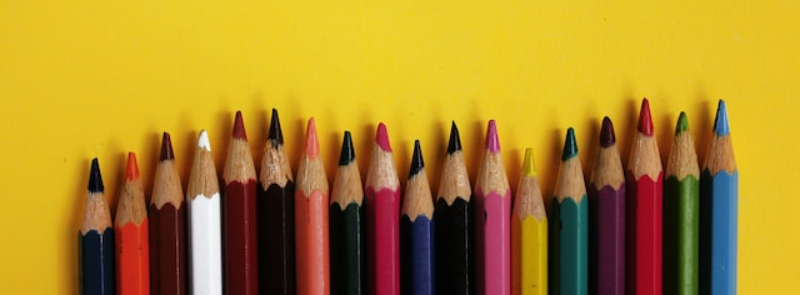
When It Occurs
Every March 30th
Timeline
Days Passed (959)
# Hashtags
#NationalPencilDay #WriteIt
March 30 marks National Pencil Day, offering a perfect opportunity to delve into the history of these timeless writing tools. This unassuming instrument holds great significance for mankind, serving as a means of self-expression, fostering creativity, and supporting a myriad of scribbles and doodles. Did you know that a single pencil can produce up to 45,000 words? While pencils have evolved in design over the ages, the ingenious idea of attaching an eraser to a pencil can be credited to Hymen Lipman. This day is celebrated to pay homage to this remarkable creation that has eased our lives.
History and Origins of National Pencil Day
-
Invention of the Pencil:
- The modern pencil was invented in the late 16th century after a large deposit of graphite was discovered in Borrowdale, England. Initially, graphite sticks were wrapped in string or inserted into wooden holders to make them easier to use. By the 17th century, wood-cased pencils similar to those we use today began to be manufactured.
-
Significance of March 30th:
- National Pencil Day is celebrated on March 30th to commemorate the date in 1858 when Hymen Lipman received the first patent for attaching an eraser to the end of a pencil. Lipman, a Philadelphia stationery store owner, invented a pencil with an attached eraser, creating a convenient tool for writing and correcting errors. This innovation significantly increased the utility of the pencil, and the basic design remains popular to this day.
-
Purpose of the Day:
- The purpose of National Pencil Day is to celebrate the humble pencil, recognize its contributions to education, art, and communication, and appreciate the creativity and innovation it has inspired over the centuries. The day also encourages people to pick up a pencil and create something, whether it's a drawing, a poem, or a journal entry.
The Importance of the Pencil
-
Versatility:
- The pencil is one of the most versatile writing tools. It can be used for writing, drawing, sketching, shading, and even marking measurements. Pencils come in a variety of hardness levels, making them suitable for everything from detailed artwork to quick notes.
-
Portability:
- Pencils are portable and easy to use anywhere. They don't require batteries, ink, or electricity, making them a reliable tool in virtually any situation. This simplicity and reliability have made pencils a staple in classrooms, offices, and studios around the world.
-
Erasability:
- One of the key features that sets pencils apart from pens is their erasability. Mistakes can be easily corrected with an eraser, which is often attached to the pencil itself. This makes pencils an ideal tool for learning, brainstorming, and drafting.
-
Environmental Impact:
- Pencils are made from natural materials like wood and graphite, and they are biodegradable. While the production of pencils does have an environmental impact, many manufacturers are now focusing on sustainable practices, such as using wood from responsibly managed forests and producing recycled pencils.
-
Creativity and Innovation:
- Pencils have been the tool of choice for many artists, writers, and inventors throughout history. The ability to sketch, draft, and make changes easily has made pencils indispensable in the creative process. From Leonardo da Vinci's sketches to the initial drafts of famous literary works, pencils have played a crucial role in bringing ideas to life.
How to Celebrate National Pencil Day
There are many fun and creative ways to celebrate National Pencil Day, whether you’re an artist, a writer, or someone who simply enjoys the simplicity of this classic tool:
-
Draw or Sketch:
- Pick up a pencil and spend some time drawing or sketching. Whether you're a seasoned artist or just doodling for fun, using a pencil can help you explore your creativity. You can create a detailed piece of art or simply enjoy the process of putting pencil to paper.
-
Write a Letter or Poem:
- Use a pencil to write a letter, poem, or journal entry. There's something special about the tactile experience of writing with a pencil, and it can help you connect more deeply with your thoughts and emotions.
-
Explore Pencil Art Techniques:
- If you’re interested in art, take some time to explore different pencil art techniques, such as shading, cross-hatching, or stippling. Experimenting with these techniques can help you improve your drawing skills and discover new ways to express yourself.
-
Sharpen Your Pencils:
- Take a moment to appreciate the simple pleasure of sharpening a pencil. Whether you use a handheld sharpener, an electric one, or even a classic knife, sharpening a pencil can be a satisfying and mindful activity.
-
Learn About Pencil History:
- Use National Pencil Day as an opportunity to learn more about the history of the pencil. Research its origins, the development of different types of pencils, and how they have been used by famous artists and writers. You might also explore how pencils are made and the materials used in their production.
-
Support a Pencil Manufacturer:
- Consider purchasing pencils from a company that uses sustainable practices or supports educational initiatives. Many pencil manufacturers are committed to environmental sustainability and giving back to communities, so your purchase can make a positive impact.
-
Organize a Drawing or Writing Contest:
- If you're part of a school, community group, or organization, consider organizing a drawing or writing contest in honor of National Pencil Day. Encourage participants to create something special using only pencils, and offer small prizes for the most creative entries.
-
Give Pencils as Gifts:
- Pencils can make thoughtful and practical gifts, especially when presented in a beautiful pencil case or alongside a sketchbook or journal. Consider giving pencils as gifts to friends, colleagues, or students to encourage their creativity.
-
Reflect on the Role of Pencils in Your Life:
- Take a moment to reflect on how pencils have played a role in your life. Whether they’ve been your tool for taking notes in school, sketching out ideas, or jotting down thoughts, pencils have likely been a companion in many aspects of your life.
Fun Facts About Pencils
-
Pencil History: The word "pencil" comes from the Latin word "pencillus," meaning "little tail." This refers to the early use of a small brush or fine-pointed tool for writing and drawing.
-
Pencil Length: The average pencil can draw a line about 35 miles long or write roughly 45,000 words before running out of usable graphite.
-
No. 2 Pencil: The "No. 2" designation on pencils refers to the hardness of the graphite. A No. 2 pencil has medium hardness and is the standard pencil used for writing and standardized tests.
-
Pencil Sharpeners: The first patent for a pencil sharpener was granted in 1828 to Bernard Lassimonne in France. Before pencil sharpeners were invented, people used knives to sharpen their pencils.
-
The Eraser: Pencils with attached erasers became common in the 20th century, although early erasers were made from bread crumbs. The modern eraser, made from rubber, was invented in 1770 by British chemist Joseph Priestley.
-
Pencils in Space: Astronauts initially used pencils in space missions, but concerns about broken graphite tips and flammable wood particles led to the development of the space pen, which uses pressurized ink to write in zero gravity.
Conclusion
National Pencil Day is a celebration of one of the most enduring and versatile tools in human history. Whether used for writing, drawing, or sketching, the pencil has played a vital role in education, creativity, and communication for centuries. By taking the time to appreciate the pencil, explore its history, and engage in creative activities, you can connect with this simple yet powerful tool in new and meaningful ways. National Pencil Day reminds us that sometimes the most basic tools can be the most impactful, helping us express ideas, capture thoughts, and create art.


